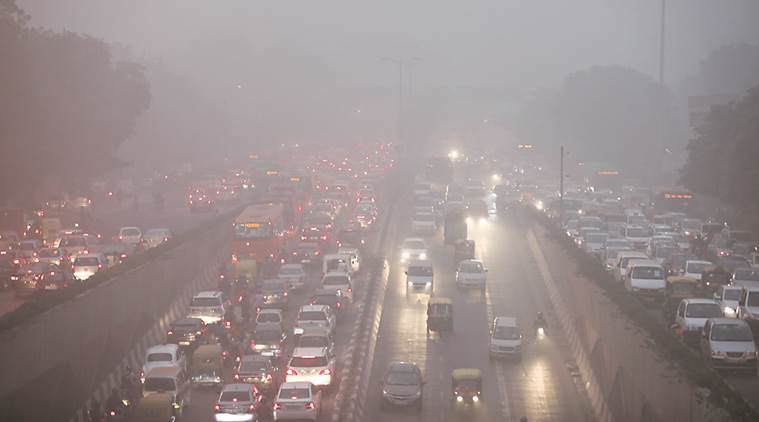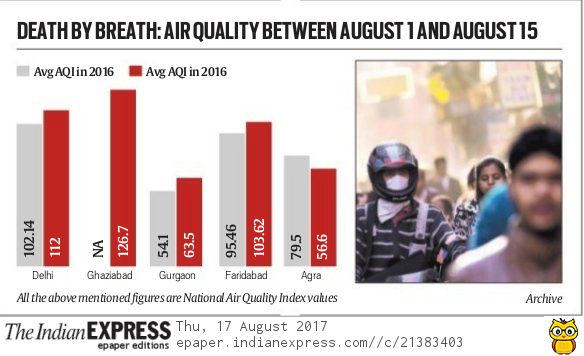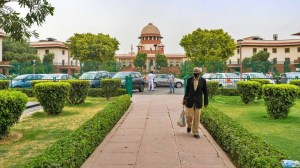- India
- International
Air quality in Delhi this August worse than that of last year: CPCB
According to a report prepared by CPCB in March last year, the cities of Varanasi and Faridabad are the most polluted in winters, with the air quality index regularly showing the severely polluted warning sign. Delhi is at number three, as per the report.
 Delhi and surrounding areas see the best air quality in the months of July and August because of the rain.
Delhi and surrounding areas see the best air quality in the months of July and August because of the rain.
Delhi’s air quality has suffered more in the first two weeks of August as compared to the same time last year, data collated by the Central Pollution Control Board (CPCB) shows. Moreover, Delhi is the second most polluted city among the neighbouring ones including Gurgaon, Faridabad, Agra and Ghaziabad.
However, Ghaziabad, where air quality monitoring was started only this year, is the most polluted with an average air quality of 126.7 as compared to Delhi’s 112.
Delhi and surrounding areas see the best air quality in the months of July and August because of the rain.
According to a report prepared by CPCB in March last year, the cities of Varanasi and Faridabad are the most polluted in winters, with the air quality index regularly showing the severely polluted warning sign. Delhi is at number three, as per the report.
In monsoon months, however, the pollution in these cities goes down considerably. Delhi, though, still sees higher pollution as compared to the others.

Rainfall has the capability to dissolve several pollutants and wash away particulate matter and dust and that is one of the reasons behind lower air pollution levels.
Higher pollution levels
A comparison of CPCB data from August this year and August last year in Delhi, Gurgaon, Faridabad and Agra shows that while pollution levels have increased in the first three cities, Agra is the only one that has managed to buck the trend.
In 2016, Gurgaon was the least polluted with an average AQI of 54.1. It has grown to 63.5 between August 1 and August 15 this year. Agra, in 2016, recorded an average AQI of 79.5. This time, however, the value is 56.6.

Delhi and Ghaziabad did not see a single good air quality day (where AQI value is below or equal to 50) in the 15 days. Agra saw six such days, Gurgaon saw two and Faridabad one.
According to officials at CPCB, Delhi’s pollution levels could be a result of two things — thick concentration of vehicles and better air quality monitoring.
“Emission from vehicles is not washed away very easily by rains. And in a high-density area like Delhi there are very few areas that act as a sink for air pollution. Also, the quality and network of air quality monitoring is much better in Delhi as compared to in other areas. Most of these places only have one or two stations. In Delhi, there are around 20 stations managed by different agencies,” said a senior official. The emergence of Ghaziabad as a high-pollution zone does not surprise experts.
“Small industries , many of them illegal, and brick kilns, generate a lot of pollutants in the area. Construction dust is also a major factor,” said the CPCB official.
Apr 25: Latest News
- 01
- 02
- 03
- 04
- 05







































